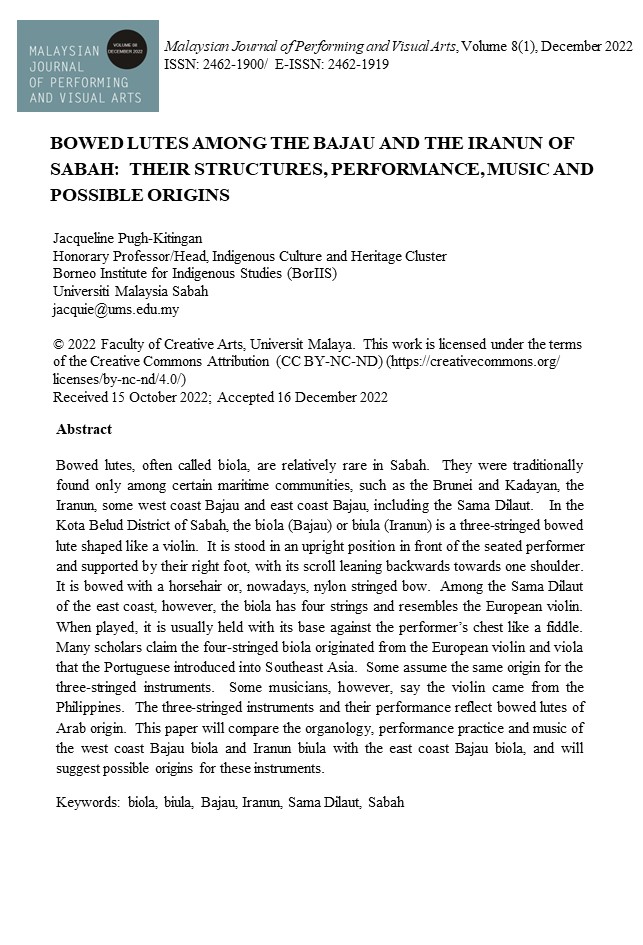BOWED LUTES AMONG THE BAJAU AND THE IRANUN OF SABAH: THEIR STRUCTURES, PERFORMANCE, MUSIC AND POSSIBLE ORIGINS
Main Article Content
Abstract
Bowed lutes, often called biola, are relatively rare in Sabah. They were traditionally found only among certain maritime communities, such as the Brunei and Kadayan, the Iranun, some west coast Bajau and east coast Bajau, including the Sama Dilaut. In the Kota Belud District of Sabah, the biola (Bajau) or biula (Iranun) is a three-stringed bowed lute shaped like a violin. It is stood in an upright position in front of the seated performer and supported by their right foot, with its scroll leaning backwards towards one shoulder. It is bowed with a horsehair or, nowadays, nylon stringed bow. Among the Sama Dilaut of the east coast, however, the biola has four strings and resembles the European violin. When played, it is usually held with its base against the performer’s chest like a fiddle. Many scholars claim the four-stringed biola originated from the European violin and viola that the Portuguese introduced into Southeast Asia. Some assume the same origin for the three-stringed instruments. Some musicians, however, say the violin came from the Philippines. The three-stringed instruments and their performance reflect bowed lutes of Arab origin. This paper will compare the organology, performance practice and music of the west coast Bajau biola and Iranun biula with the east coast Bajau biola, and will suggest possible origins for these instruments.
Downloads
Article Details

This work is licensed under a Creative Commons Attribution-NonCommercial-NoDerivatives 4.0 International License.
